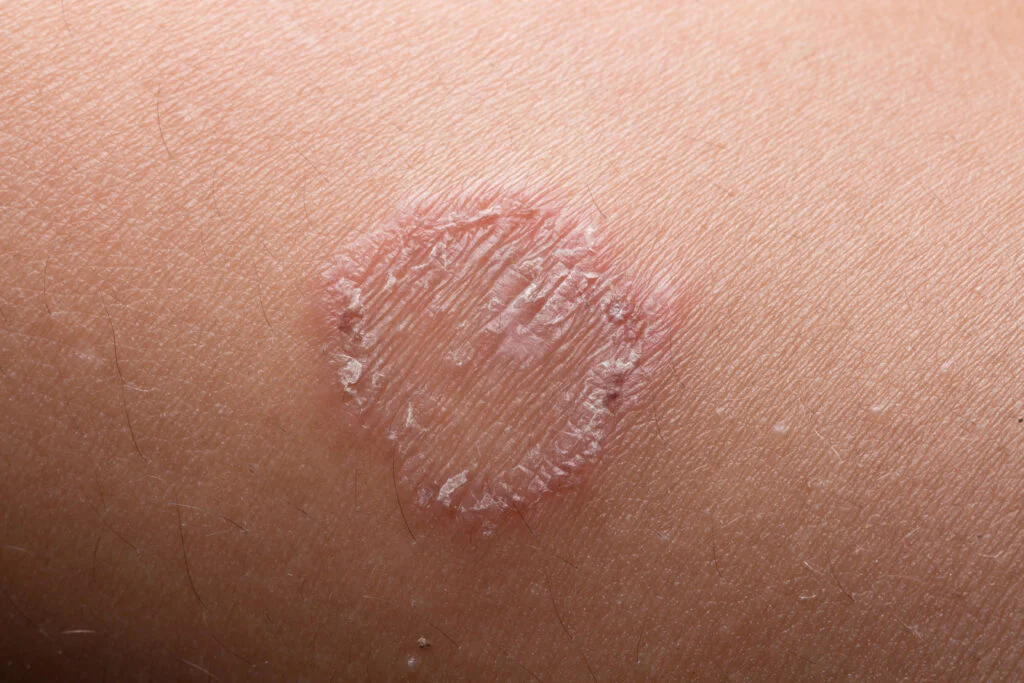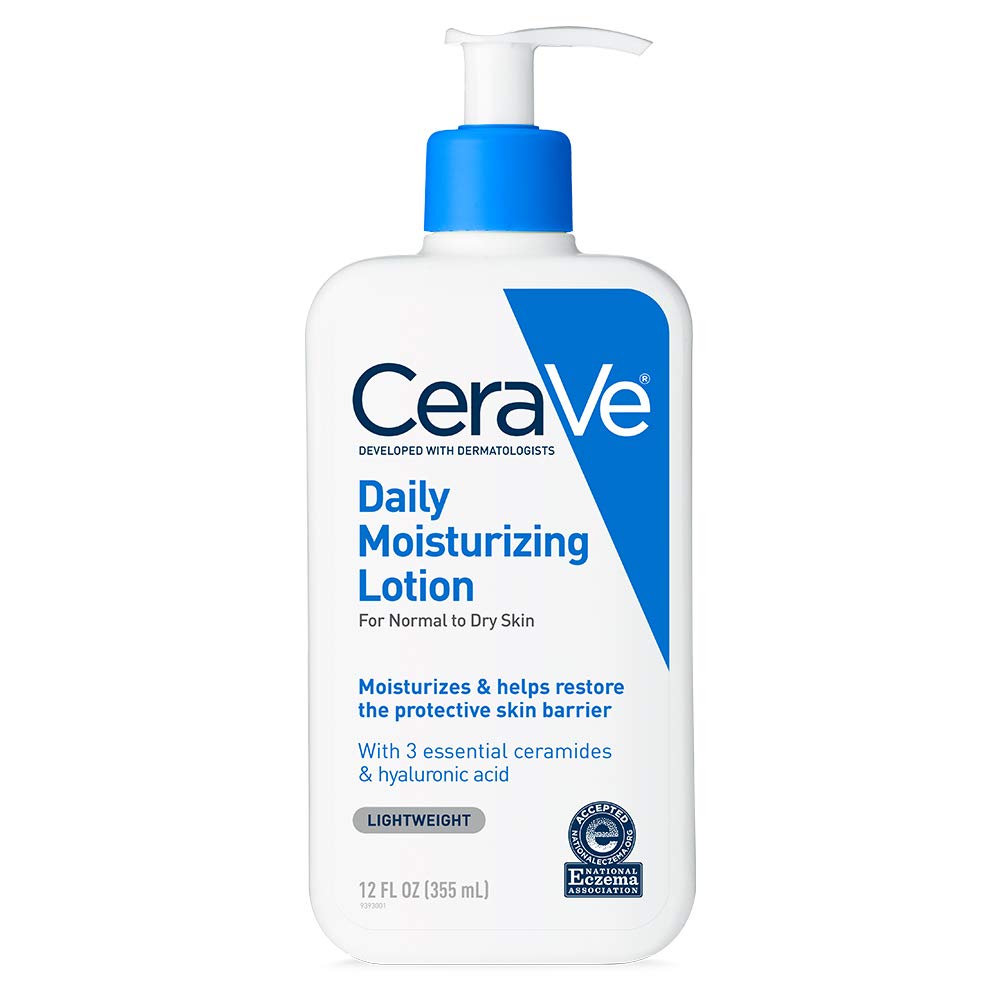Overview
Ringworm of the body (tinea corporis) is a fungal infection characterized by a rash that typically appears as an itchy, circular patch with clearer skin in the middle. Despite its name, ringworm involves no worms. It is closely related to other fungal infections such as athlete’s foot (tinea pedis), jock itch (tinea cruris), and ringworm of the scalp (tinea capitis).
Different Types of Ringworm
Ringworm, a common fungal infection, can affect various parts of the body. Each type has distinct characteristics and affects different areas.
1. Tinea Corporis (Body Ringworm)
- Location: Affects the body, typically the arms, legs, and trunk.
- Symptoms: Circular, itchy rash with a clear center and raised edges.
2. Tinea Pedis (Athlete’s Foot)
- Location: Affects the feet, especially between the toes.
- Symptoms: Itchy, scaly, and cracked skin; may cause a burning sensation.
3. Tinea Cruris (Jock Itch)
- Location: Affects the groin area.
- Symptoms: Red, itchy rash with a defined edge, often extending to the inner thighs and buttocks.
4. Tinea Capitis (Scalp Ringworm)
- Location: Affects the scalp.
- Symptoms: Scaly, itchy patches on the scalp; can cause hair loss in affected areas.
5. Tinea Unguium (Onychomycosis or Nail Fungus)
- Location: Affects the nails, both fingernails and toenails.
- Symptoms: Thickened, discolored, and brittle nails; nails may separate from the nail bed.
6. Tinea Barbae (Barber’s Itch)
- Location: Affects the beard area on the face and neck.
- Symptoms: Red, inflamed patches, sometimes with pustules; may cause hair to break off.
7. Tinea Manuum (Hand Ringworm)
- Location: Affects the hands, particularly the palms.
- Symptoms: Dry, scaly skin; can cause blistering and itching.
8. Tinea Faciei (Facial Ringworm)
- Location: Affects the face, excluding the beard area.
- Symptoms: Red, scaly patches that may be itchy or cause a burning sensation.

Causes
Ringworm is caused by contagious fungal parasites that inhabit the outer layer of the skin. It can be spread through:
- Human to Human: Direct skin-to-skin contact with an infected person.
- Animal to Human: Touching an animal with ringworm, such as cats, dogs, or cows.
- Object to Human: Contact with contaminated objects or surfaces like clothing, towels, bedding, combs, and brushes.
- Soil to Human: Rarely, through prolonged contact with highly infected soil.
SYMTOPS
Ringworm initially appears as discolored, often scaly patches on affected areas, typically red on lighter skin or brown-gray on darker skin. Symptoms can include:
- Itchiness
- Itchy or scaly patches that are red, brown, or gray, or raised areas of skin called plaques
- Round, flat patches of itchy skin
- Patches that develop blisters or pustules
- Patches resembling a ring with deeper color on the outside
- Patches with defined and raised edges
- Overlapping rings
- Hair loss
How Does a Human Get Ringworm?
Around 40 different species of fungi, most commonly Trichophyton, Microsporum, and Epidermophyton, can cause ringworm. These fungi can live on the skin and other surfaces, especially in damp areas, and can survive in the soil as spores for extended periods.
Is Ringworm Contagious?
Yes, ringworm fungi are highly contagious and can spread in four main ways:
- Human to Human: Through direct contact with an infected person or sharing personal items such as combs or towels.
- Animal to Human: By touching an infected animal or items the animal has touched. Cats and dogs are common sources.
- Object to Human: Through contact with contaminated objects or surfaces, such as telephones or public shower floors.
- Soil to Human: Through direct contact with infected soil.
Ringworm is common among children, adults with weakened immune systems, and pet owners.
Will Ringworm Go Away on Its Own?
Ringworm might resolve on its own, but treatment can significantly speed up recovery and reduce the likelihood of spreading the infection. Mild cases might take longer to clear up without treatment.
Best Cure for Ringworm
The best treatment for ringworm depends on the type and location of the infection. Here are some general guidelines:
Medications
Topical Antifungals:
- For mild to moderate infections, doctors may prescribe or recommend over-the-counter (OTC) antifungal creams or ointments containing:
- Clotrimazole (Lotrimin)
- Miconazole (Micatin)
- Terbinafine (Lamisil)
- Ketoconazole
Oral Antifungals:
- For more severe or widespread infections, or if the infection affects the scalp, nails, or other difficult-to-treat areas, oral antifungal medications may be necessary. These include:

- Terbinafine
- Itraconazole
- Fluconazole
- Griseofulvin
Additional Recommendations:
- Hygiene: Wash your bedding and clothing daily to help disinfect your surroundings.
- Dry Skin Thoroughly: After bathing, ensure your skin is thoroughly dry before dressing.
- Loose Clothing: Wear loose-fitting clothing in affected areas to reduce irritation.
Home Remedies
Some people use home remedies to complement traditional treatments, though these are not scientifically proven and should not replace antifungal medications. Always consult a doctor before trying any home remedy. Some common home remedies include:
- Apple Cider Vinegar: Claimed to have antifungal properties.
- Coconut Oil: Known for its moisturizing effects and potential antifungal benefits.
- Turmeric: Often used for its anti-inflammatory and antimicrobial properties.
- Essential Oils: Such as tea tree oil, which is believed to have antifungal and antibacterial properties.
Skincare Routine and Products for Ringworm
Proper skincare is essential for managing ringworm and preventing its spread. Here is a recommended skincare routine and product guide for those dealing with ringworm.
Daily Skincare Routine
- Cleansing:
- Morning and Evening: Gently cleanse the affected area with a mild, antifungal soap.
- Recommended Product: Defense Soap Antifungal Body Wash.
- Drying:
- Thoroughly Dry: After cleansing, ensure the skin is completely dry, especially in skin folds and between toes. Use a clean towel and avoid sharing towels with others.
- Antifungal Treatment:
- Topical Application: Apply an antifungal cream, ointment, or powder to the affected areas as directed by your doctor.
- Recommended Products:

- Lotrimin AF (Clotrimazole) Cream
- Lamisil (Terbinafine) Cream
- Tinactin (Tolnaftate) Powder
- Moisturizing:
- Non-Greasy Moisturizers: Use a light, non-greasy moisturizer on unaffected areas to maintain skin hydration without creating a damp environment where fungi can thrive.
- Recommended Product: CeraVe Moisturizing Lotion.

- Clothing:
- Loose and Breathable: Wear loose-fitting, breathable clothing to reduce friction and moisture build-up.
- Cotton Fabrics: Opt for cotton or moisture-wicking fabrics.
- Laundry:
- Daily Washing: Wash bedding, towels, and clothing daily with hot water and a fungicidal detergent to prevent reinfection and spread.
- Recommended Product: Lysol Laundry Sanitizer.
Additional Tips
- Avoid Scratching: Resist the urge to scratch affected areas to prevent spreading the infection and causing additional irritation.
- Personal Hygiene: Avoid sharing personal items such as towels, clothing, and grooming tools.
- Environmental Hygiene: Regularly clean and disinfect common surfaces and personal items, especially if you share a living space with others.
- Footwear: Keep feet dry by wearing breathable shoes and changing socks regularly if you have tinea pedis (athlete’s foot).
When to See a Doctor
- Persistent Infection: If the infection does not improve with OTC treatments within two weeks.
- Worsening Symptoms: If symptoms worsen or spread despite treatment.
- Scalp or Nail Involvement: These may require prescription medications for effective treatment.
